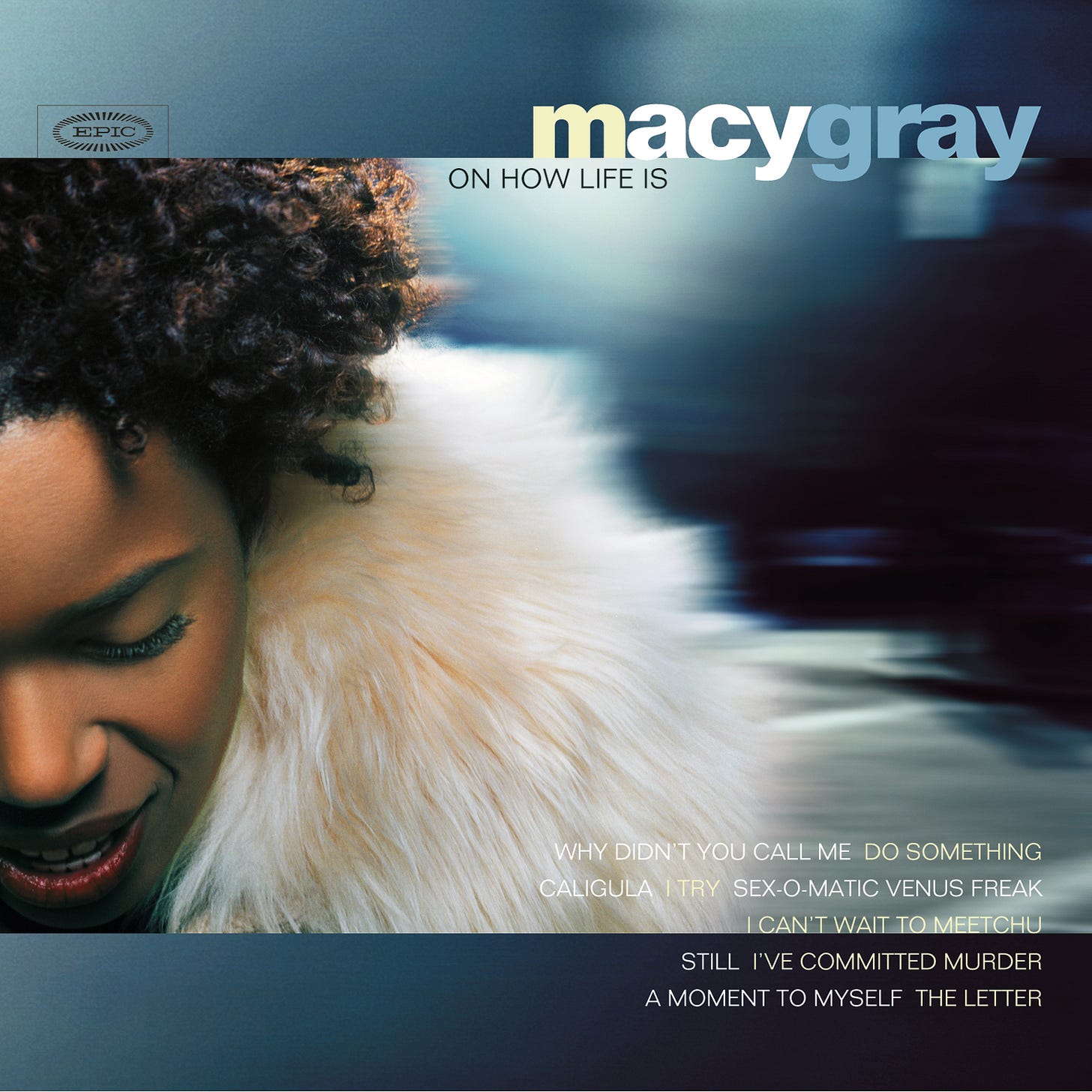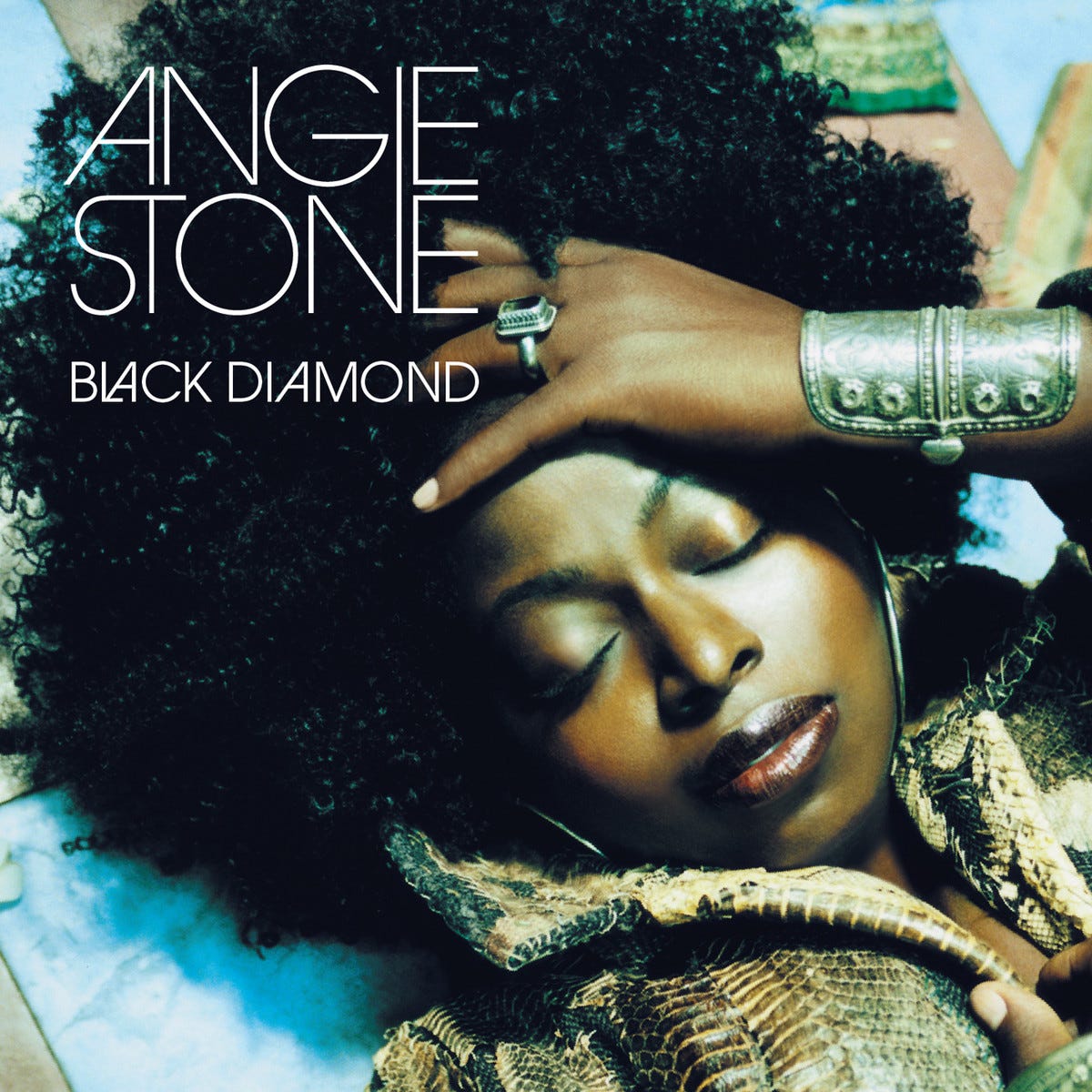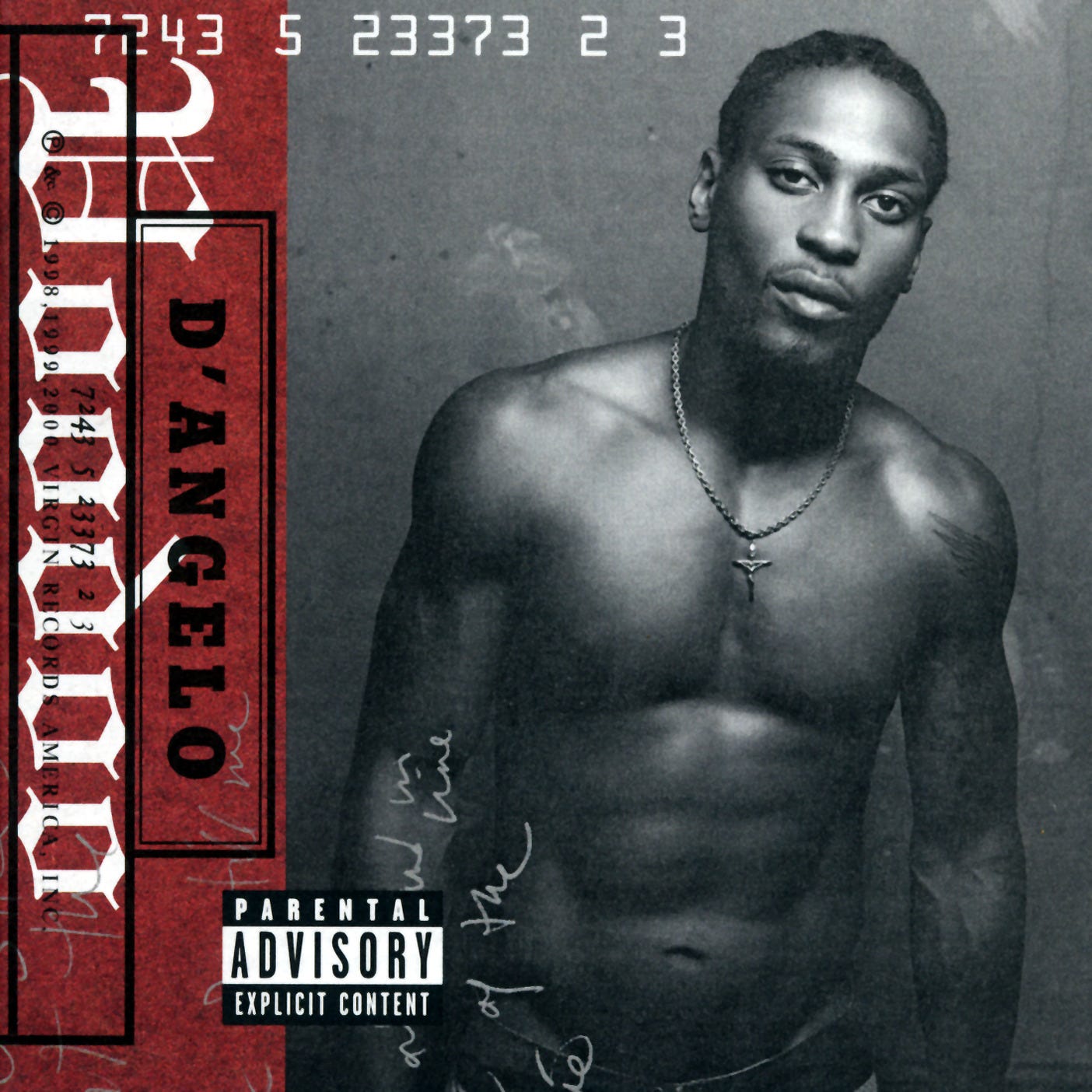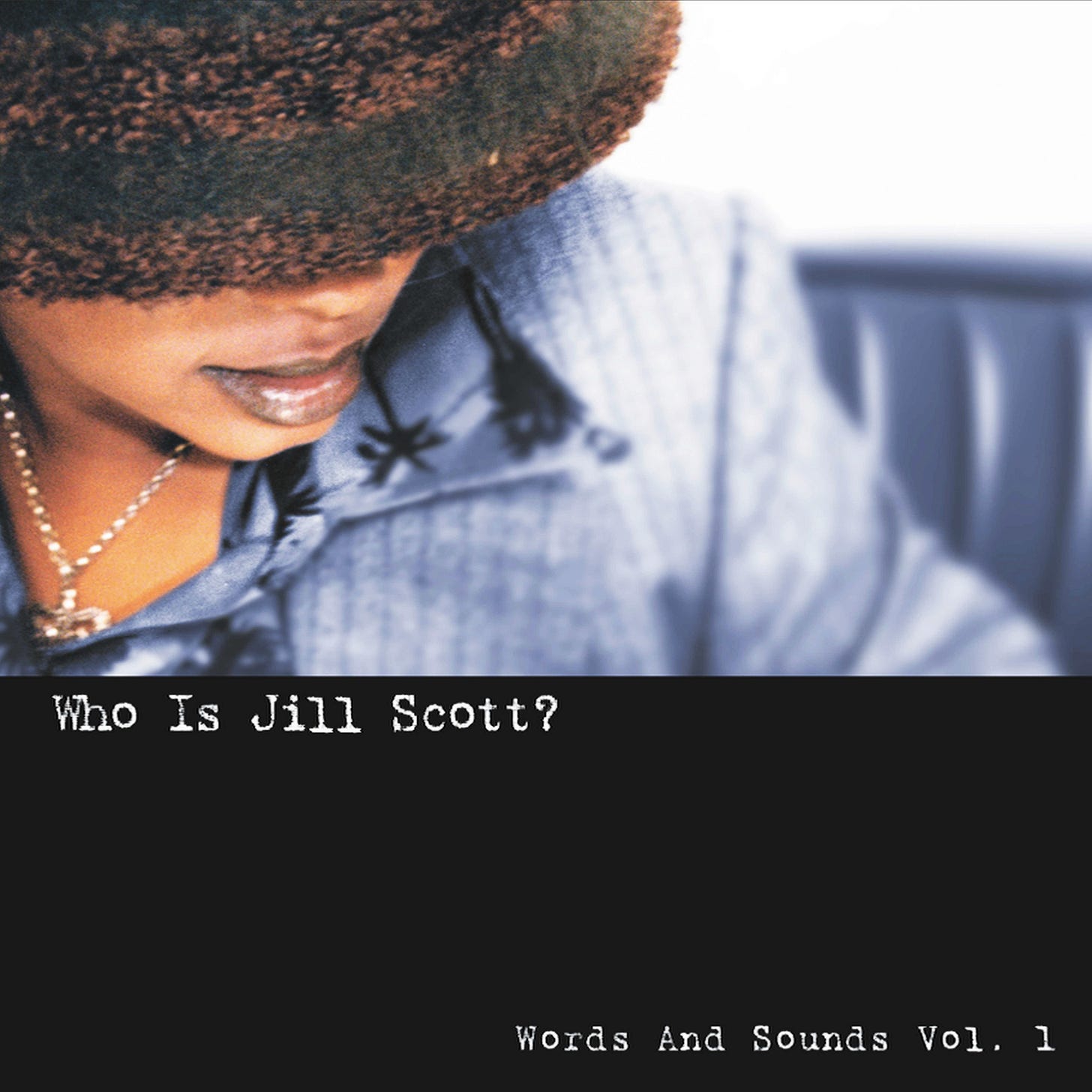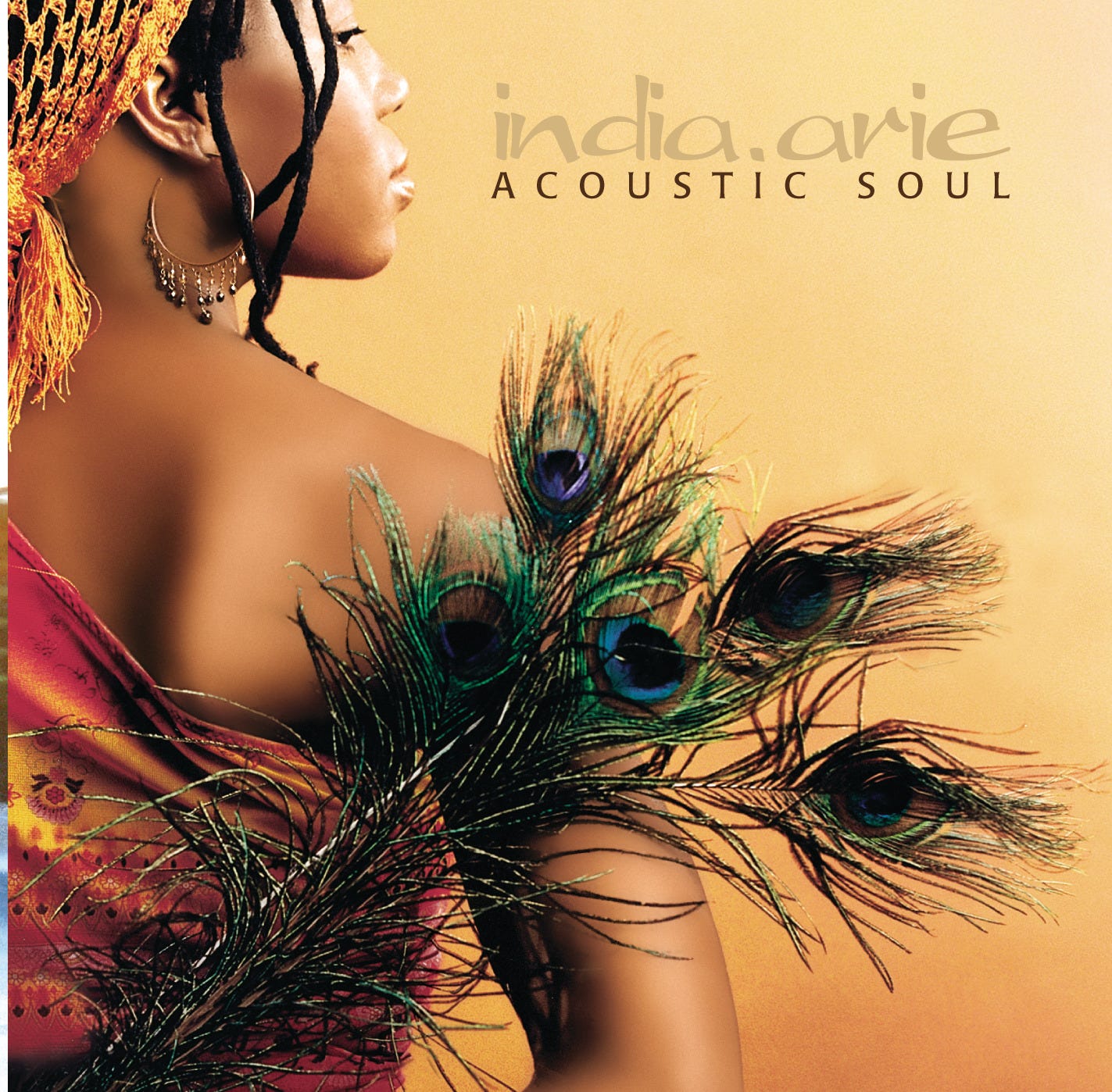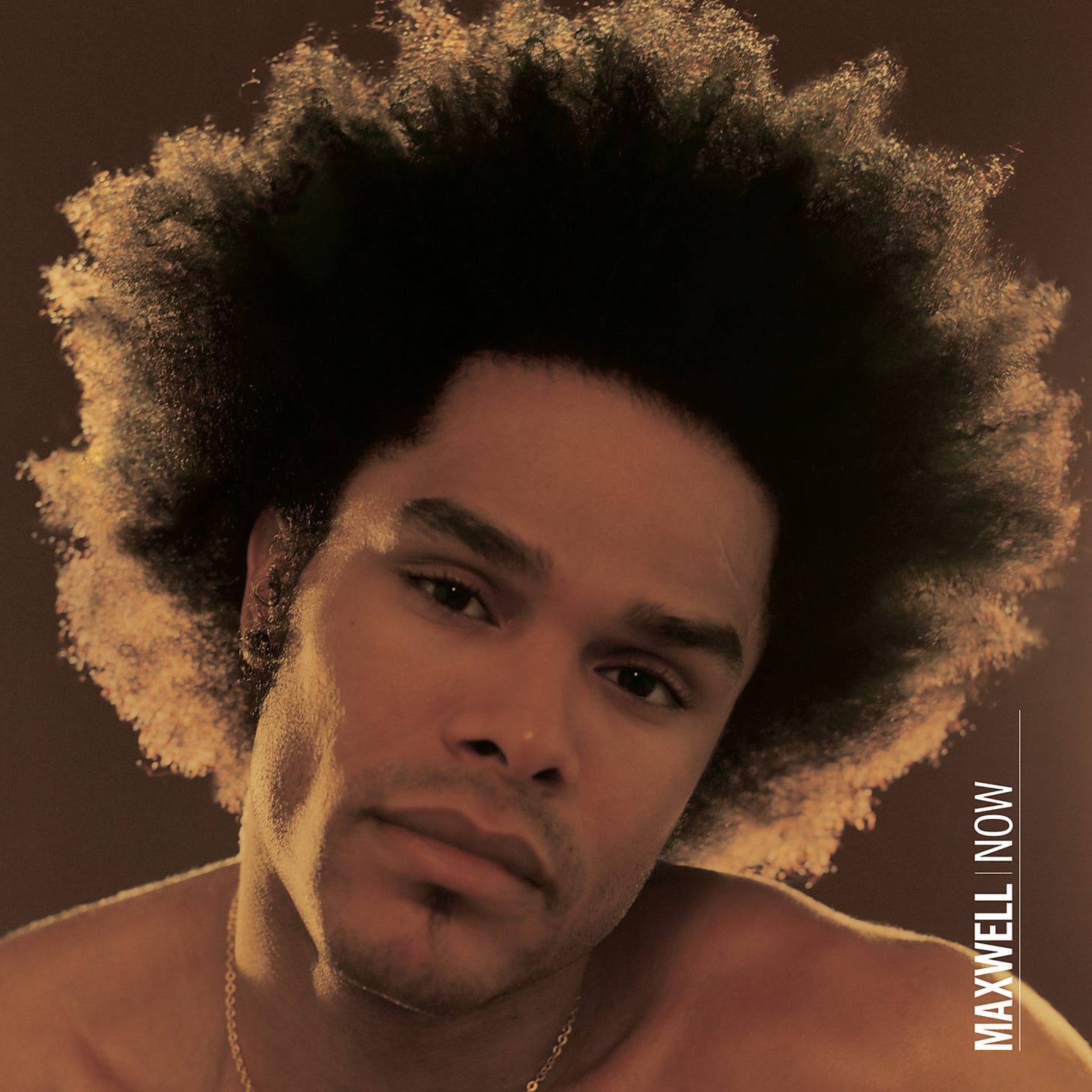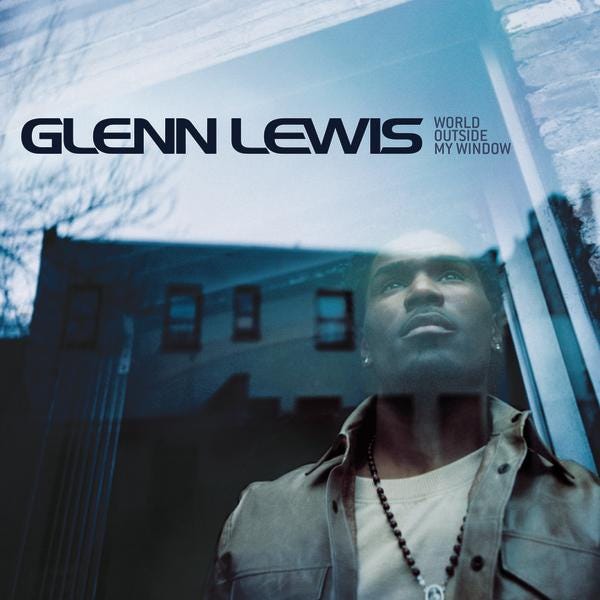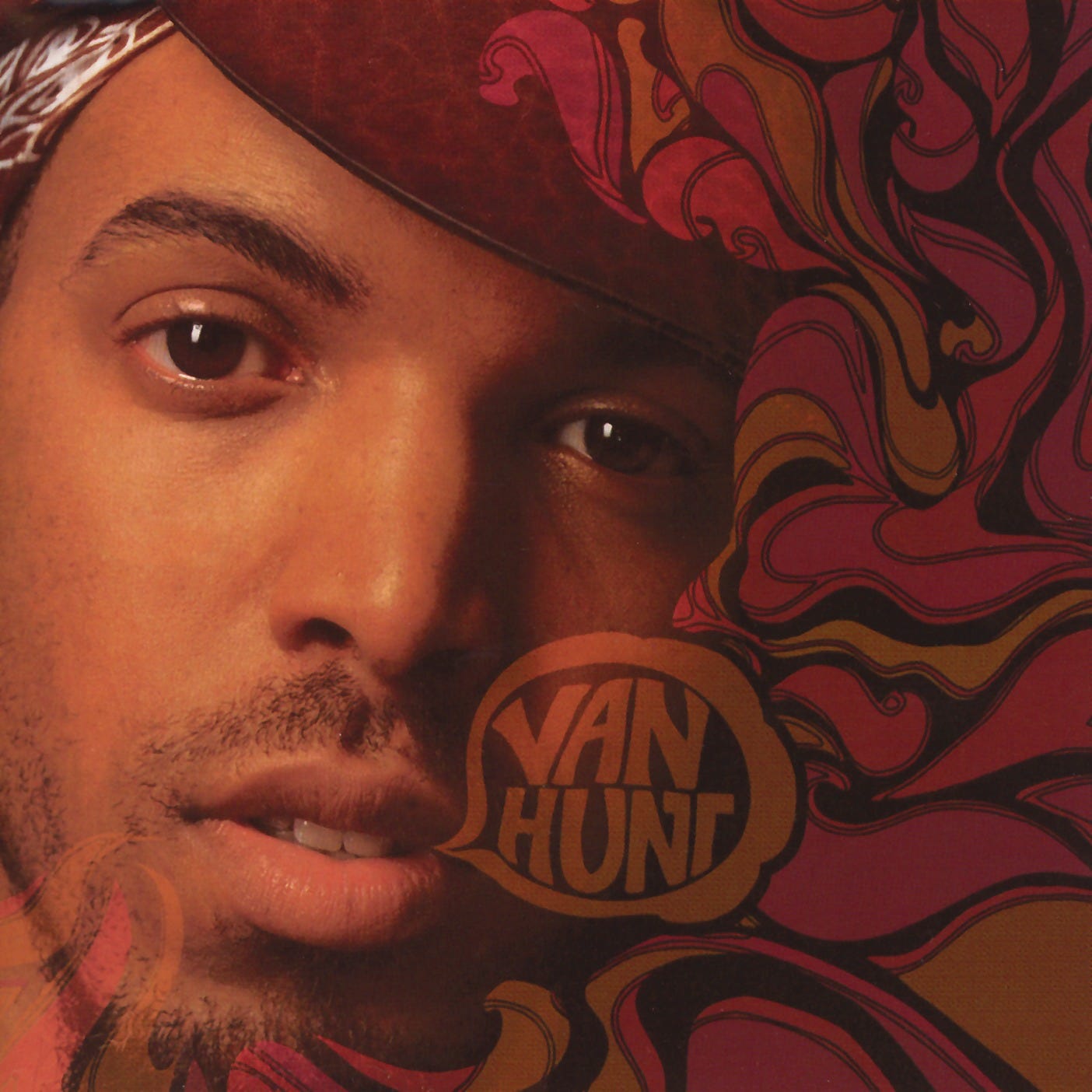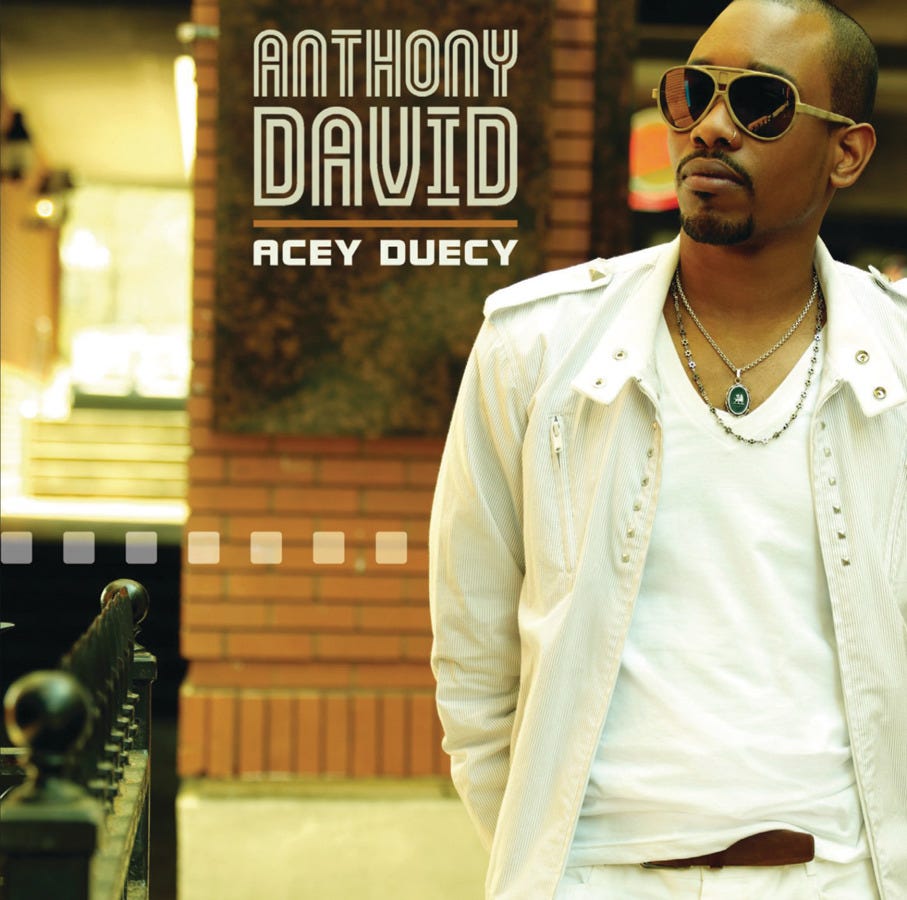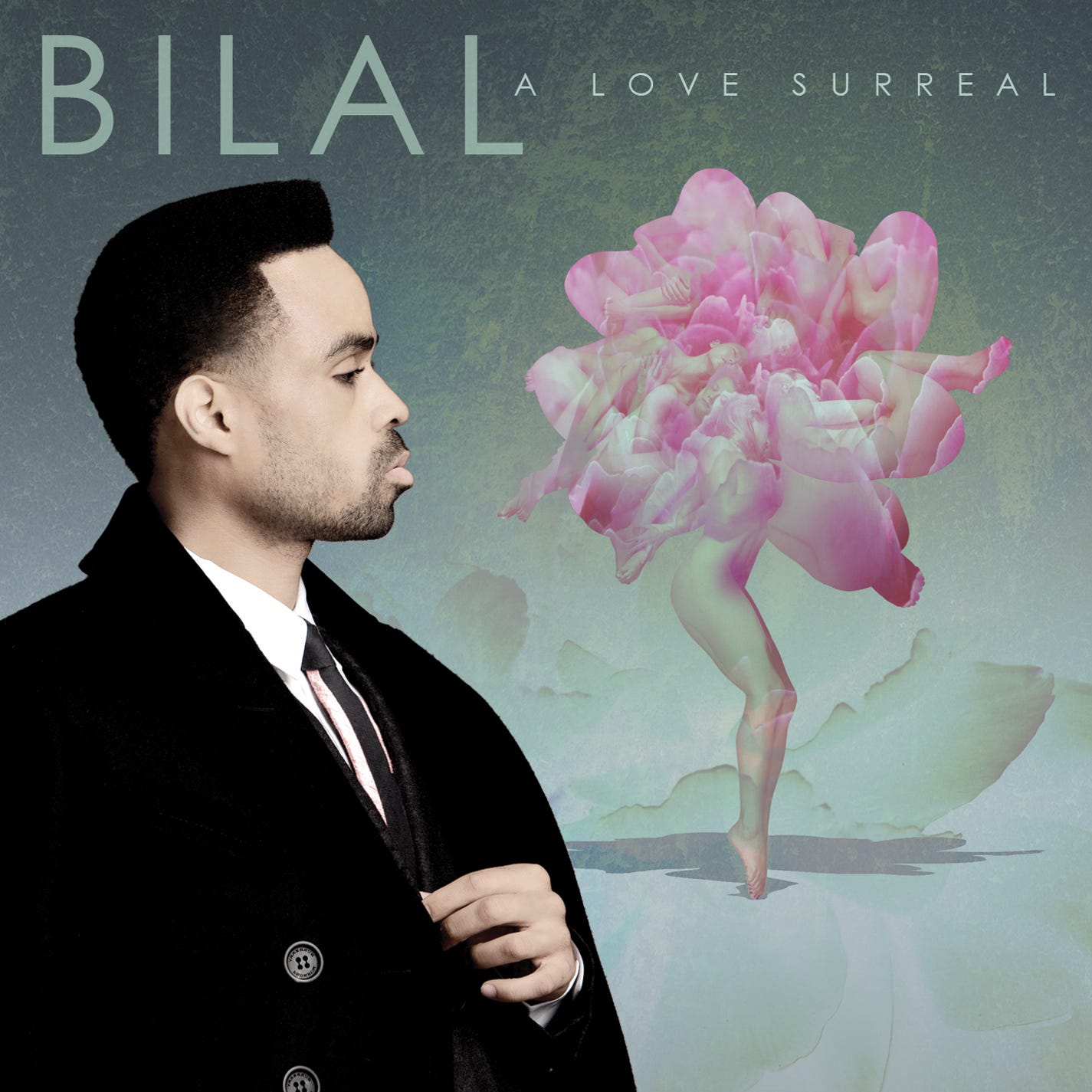A Guide to Neo-Soul Albums
With Erykah Badu, D'Angelo, Maxwell, and many others, the genre found its class again: Neo-soul relit the flame of soul music and returned it to its roots in terms of composition and lyricism.
In 1997, the music industry witnessed the emergence of a fresh sound with Erykah Badu’s first album, Baduizm. Kedar Massenburg of Motown Records coined this innovative blend of soul, R&B, jazz, and funk as neo-soul. The genre wasn’t entirely new; it echoed the 1970s soul vibe heard in earlier works like Tony! Toni! Toné!’s Sons of Soul and D’Angelo’s Brown Sugar. Yet, it was Meshell Ndegeocello’s Plantation Lullabies that truly set the stage for neo-soul, combining spoken word with diverse musical influences across various tempos.
The 1990s saw a resurgence of this soulful aesthetic through a new wave of artists who infused their work with influences from multiple genres to craft a modern take on soul. Despite its growth and evolution, some artists found the term ‘neo-soul’ limiting due to their wide-ranging artistic pursuits. By the turn of the century, this label had vocal resistance. Jaguar Wright expressed her discontent through her album Divorcing Neo 2 Marry Soul, while Marsha Ambrosius declared Neo Soul is Dead in her mixtape with DJ Drama, contrasting hip-hop and P-funk elements against lyrics that pronounced the end of neo-soul. However, it’s due to the leading artists not wanting that sub-genre labeled to their name, making them carve out a different lane.
As neo-soul carved its niche amidst the dominant genres of hardcore hip-hop and R&B in the ‘90s, its pioneers often drew inspiration from their upbringing during an era marked by Black Power and diverse musical exposure. The cultural ideologies from this period influenced their artistry and were reflected in their work. Angie Stone’s album Black Diamond, Eric Benét’s song “Ghetto Girl,” and Meshell Ndegeocello’s “Dred Loc” are examples where themes of Black identity and social consciousness are evident. Maxwell’s lyrics playfully use terms like “honeydosugachocolate dumpling” in “Sumthin’ Sumthin” or celebrate physical attributes as in “Suitelady (The Proposal Jam).” Similarly, Jill Scott lyrically paints her lover’s rich brown skin tone in “Love Rain” and evokes traditional African American cuisine in “It’s Love.”
Neo-soul frequently explores the dynamics of personal connections. In their quest for meaningful, committed partnerships, male artists openly express their vulnerabilities and apprehensions, as evidenced by D’Angelo in tracks like “Lady” and “Alright” or Maxwell in “Lonely’s the Only Company.” Conversely, woman voices in this genre exude empowerment and liberation, which influence songs about relationships and extend to tracks that comment on social and political issues. For instance, Meshell Ndegeocello’s album Plantation Lullabies draws parallels with the 1960s racial equality movement in her song “I’m Diggin’ You (Like an Old Soul Record)” and critiques the impact of capitalism on Black communities within urban settings through “Shoot’n Up and Gett’n High.” Similarly, Erykah Badu’s “The Cell” delves into the devastation wrought by drug addiction on individuals and families, while “Twinkle” sheds light on the effects of systemic racism.
Please take a deep breath because it’s a big one. Here is the guide to neo-soul albums.
1990s
Brown Sugar — D’Angelo
In 1995, Michael D’Angelo Archer’s debut album, Brown Sugar, emerged as a beacon for modern soul music. Amidst a sea of overproduced and lackluster offerings, this record returned to the genre’s roots. Born in Virginia in 1974, D’Angelo infused his work with the essence of seventies soul, crafting grooves and beats that resonated with hip-hop enthusiasts. His multifaceted talent shone through ballads and up-tempo tracks, reinvigorating soul music with an energy reminiscent of Prince’s versatility.
Not only did he handle production and play multiple instruments—including keys, bass, drums, guitar, and saxophone—but he also collaborated with notable figures such as Ali Shaheed Muhammed from A Tribe Called Quest, Raphael Saadiq, and Bob Power. D’Angelo’s penchant for vintage gear like the Wurlitzer, Hammond organ, and Fender Rhodes was evident throughout the album. He even paid homage to the past with a refined cover of Smokey Robinson’s “Cruisin’” from 1979. Brown Sugar thus marked the inception of neo-soul.
Maxwell’s Urban Hang Suite — Maxwell
The following year saw Gerald Maxwell Rivera—known professionally as Maxwell—join the ranks of those redefining soul music in the nineties. The Brooklyn-born artist of Haitian and Puerto Rican descent crafted Maxwell’s Urban Hang Suite, drawing on influences from Marvin Gaye to Herbie Hancock’s jazz fusion stylings. This album wove elements of seventies soul with smooth jazz and soft rap beats into a fabric that stood apart from mainstream productions. Collaborations with industry veterans like Leon Ware and Wah-Wah Watson ensured a timeless quality without feeling outdated. Maxwell’s work was not just an album but a narrative concept exploring love and personal battles—a testament to his unique voice and artistic vision.
Baduizm — Erykah Badu
Two years after D’Angelo claimed his throne in neo-soul, Erykah Badu emerged as its queen with her 1997 release Baduizm. Her approach combined mellow beats reminiscent of contemporary rap with her distinctive sensual vocals to create a smooth and electrifying atmosphere. Badu’s style evoked legends like Diana Ross and Sade while maintaining her unique lyrical expression—as she aptly puts it in “Appletree,” offering “food for thought.” The album featured contributions from jazz great Ron Carter on double bass and Bob Power on production duties alongside members of The Roots, including Questlove. Baduizm presented a meditative groove that encapsulated neo-soul from start to finish.
Adriana Evans — Adriana Evans
The debut of Adriana Evans marked a significant moment in the late ‘90s R&B scene, introducing a fresh voice with a jazz-infused style. Her vocal delivery is clear and emotionally resonant, navigating the album’s melodies effortlessly. Jazz elements are skillfully incorporated into the production, setting this work apart from its contemporaries. Evans showcased her ability to blend classic soul with modern sensibilities. The album covers themes of love and introspection, striking a chord with those who value reflective music. It remains an essential contribution to the neo-soul genre’s growth.
Embrya — Maxwell
Released in 1998, Embrya marked a distinct shift in Maxwell's musical direction, embracing a more experimental approach to R&B and neo-soul. The album's production, rich with lush synthesizers and elaborate arrangements, diverged from the minimalist style of his debut. Maxwell collaborated with Stuart Matthewman, who brought his unique sensibilities to the project, enhancing its atmospheric qualities. The lyrics throughout Embrya are introspective, often dealing with love, spirituality, and human growth themes. This sophomore release challenged listeners with its unconventional structure and extended instrumental interludes. Despite initial mixed reactions, over time, it has been recognized for its ambitious nature and contribution to the evolution of the neo-soul genre.
The Miseducation of Lauryn Hill — Lauryn Hill
Lauryn Hill arrived from the turbulence of her time with The Fugees and her personal life to release a groundbreaking solo album. Hill’s artistry flourished amid creative tensions with Wyclef Jean and Pras Michel, welcoming her first child with Rohan Marley. Her debut solo work, The Miseducation of Lauryn Hill, synthesized diverse Black music styles prevalent in the nineties into a harmonious collection. This album was crafted amidst collaborations with legends like Aretha Franklin and Whitney Houston, yet Hill’s songwriting remained profoundly personal and organic. She created a rich musical fabric using an array of instruments such as timpani, organs, strings, brass, harps, piano, and percussion (well, about that) in studios across Chung King in New York and Tuff Gong in Kingston.
The album resonated with Caribbean patois, and compelling lyrics showcased Hill’s dual identity as a fierce MC and a soulful singer. She channeled the spirit of Motown and Nina Simone into her unique musical expression. Despite Wyclef Jean’s characterization of her as bipolar, Hill demonstrated a multifaceted talent that transcended simple labels. The Miseducation featured collaborations with artists including Santana on “To Zion,” Mary J. Blige on “I Used to Love Him,” and D’Angelo on “Nothing Even Matters.” Over two decades later, this dazzling debut still awaits a successor.
Princesses Nubiennes — Les Nubians
Les Nubians’ debut album has a distinctive fusion of neo-soul with African and European influences. Helene and Celia Faussart, the French-Cameroonian sisters behind the group, drew upon their multicultural upbringing to infuse the record with a blend of languages and stylistic elements. The result was an album that defied simple categorization, marrying smooth R&B melodies with Francophone pop sensibilities and traditional African rhythms. Their sound reflected a careful balance between organic instrumentation and contemporary studio techniques. The album’s success can be attributed to its fresh sound that resonated with a diverse audience, eager for music that broke cultural barriers while maintaining soulful authenticity. With Princesses Nubiennes, Les Nubians established themselves as innovative contributors to the neo-soul genre, setting the stage for future cross-cultural musical contributions.
The Once and Future — Jazzyfatnastees
The debut album by Jazzyfatnastees, The Once and Future, marks a distinctive entry into the neo-soul genre. Mercedita L. Andrews and Tracey Moore, the duo behind the name, collaborated with The Roots to produce an album that fused soulful harmonies with a contemporary edge. Their vocal chemistry is evident throughout the album, creating a dynamic that balances raw emotion with polished production. With its release, the duo established themselves among the innovative voices of their time, drawing from classic R&B while injecting modern sensibilities. The project’s structure reflects a thoughtful approach to songwriting, where each piece contributes to a cohesive narrative of love and self-reflection. This blend of traditional soul elements with fresh perspectives positioned Jazzyfatnastees as noteworthy contributors to the evolution of neo-soul.
On How Life Is — Macy Gray
Macy Gray entered the scene in 1999 with On How Life Is, sharpening the edges of soul music that had dulled over the previous decade. As contemporaries Erykah Badu and Jill Scott explored the soul’s sensual aspects, Gray invoked the spirit of Betty Davis—the fierce funk pioneer of the seventies—with her powerful debut. Gray’s distinctive voice carried echoes of Billie Holiday while infusing her music with an eclectic mix of funk reminiscent of Prince and groovy pop melodies. On How Life Is broke conventional neo-soul boundaries by incorporating hip-hop elements through selective sampling from artists like Outkast and Fat Boys. With this album, Macy Gray established herself as a neo-soul artist and a bold figure with rock’n’roll sensibilities—a true force within the genre.
Black Diamond — Angie Stone
Angie Stone brought maturity and confidence to her debut, reflecting her extensive experience in the industry. Her warm vocal tones anchor the album’s sophisticated soundscapes. Black Diamond’s title mirrors Stone’s narratives on life’s trials and relationships, symbolizing strength and endurance. Organic sounds are at the forefront of this record, marrying traditional R&B with funk and hip-hop elements. Its influence on neo-soul is widely acknowledged, cementing Stone’s role in shaping the genre.
2000s
Voodoo — D’Angelo
With Voodoo, D’Angelo introduced a minimalist approach to production that distinguished his work from other music of the time. The turn of the millennium saw this album offer an innovative and influential raw simplicity. Intensity and sensuality define D’Angelo’s vocal performance here, showcasing his emotional range as an artist. Musicianship is emphasized throughout, contributing to an organic ambiance that has inspired many subsequent artists. The album addresses spirituality, love, and human nature with finesse and depth. Its bold songwriting and arrangements have garnered a reaction (positive or negative) for breaking new ground.
Infinite Possibilities — Amel Larrieux
Infinite Possibilities marks Amel Larrieux’s transition from the duo Groove Theory into a solo career. Released in 2000, this album showcases Larrieux’s fluid vocal style and ability to blend soul with jazz and funk elements. The album’s production involved collaboration with her husband, Laru Larrieux, contributing to its unique sound. It reflects themes of personal growth and emotional depth. The album did not achieve massive commercial success but was critically acclaimed for its creativity and authenticity.
Who Is Jill Scott?: Words and Sounds, Vol. 1 — Jill Scott
Jill Scott’s debut album arrived in 2000, heralding the arrival of a new voice in R&B and neo-soul. With its release, Scott established herself with her unique blend of spoken-word poetry and soulful melodies. The Philadelphia native drew upon her experiences and the city’s rich musical heritage to craft an album that resonated with authenticity. Collaborations with notable producers such as Jazzy Jeff and James Poyser helped to shape the sound of the album. The lyrical content ranged from love’s complexities to self-empowerment, wrapped in lush instrumentation. This work marked a significant moment for Scott, launching her into the spotlight and setting the stage for a successful career.
Aijuswanaseing — Musiq Soulchild
Musiq Soulchild debuted with Aijuswanaseing, blending smooth vocals with grooves that speak directly to themes of love and connection. His approachable style made an immediate impression on fans of R&B music looking for relatable content. For his first outing, he demonstrated considerable potential as both singer and songwriter within neo-soul circles. Preferring live instruments over programmed beats gave the record an authenticity reminiscent of classic soul albums. His debut played a significant role in shaping neo-soul during its formative years.
Mama’s Gun — Erykah Badu
Erykah Badu fused soul, funk, jazz, and hip-hop in Mama’s Gun, creating an eclectic sonic experience. Her distinctive timbre captivates from start to finish on this multifaceted album. This release fortified Badu’s position as a central figure in neo-soul during its rise to prominence. She tackles themes ranging from personal evolution to broader social commentary with intelligence and insight. Mama’s Gun has become a defining work within neo-soul due to its profound impact on listeners and willingness to challenge the genre.
Acoustic Soul — India.Arie
India.Arie arrived on the music scene with a refreshing honesty and raw musicianship rarely seen in debut works. This album showcased Arie’s skillful guitar work and insightful songwriting, which addressed themes of self-acceptance, love, and spirituality. Her approach to recording emphasized natural sounds and acoustic arrangements, creating an intimate atmosphere that allowed her expressive voice to take center stage. The production eschewed heavy-handed studio effects in favor of a more stripped-down aesthetic that highlighted the warmth of Arie’s vocal delivery. She carved out a niche within the neo-soul genre through this work by emphasizing lyrical depth and musical simplicity over ornate production. Acoustic Soul not only introduced India.Arie was a formidable talent but also contributed to defining the contours of neo-soul in the early 21st century.
1st Born Second — Bilal
Bilal’s debut album presents him as an underappreciated talent within the music industry. Despite his collaborations with notable artists like Kendrick Lamar on tracks like “Institutionalized” and “These Walls,” Bilal has not received recognition commensurate with his abilities. His Philadelphia roots connect him to other prominent voices, such as The Roots and Jill Scott, who influenced his music at 22. With nods to Curtis Mayfield and Prince, Bilal’s falsetto adds a unique touch to his work. Although featuring hip-hop heavyweights like Dr. Dre, Jadakiss, and Mos Def, the album retains neo-soul characteristics in its lyrics and rhythms. Bilal showcases versatility across genres, including jazz and blues, setting him apart from contemporaries like D’Angelo. Despite their merits, subsequent albums never quite captured the depth of 1st Born Second.
Now — Maxwell
Maxwell returned with Now, an album that balanced his earlier sound with his evolving artistic expression. During this period, he solidified his reputation as a musician, unafraid to blend soulful melodies with contemporary production techniques. The record features contributions from noted musicians such as Wah Wah Watson and Hod David, which added depth to its sonic palette. With his third effort, Maxwell aimed to create a work that was accessible yet retained the sophistication of his previous efforts. The album's themes revolve around romantic relationships and personal reflection, delivered through Maxwell's passionate vocal performances. Commercially successful upon release, Now demonstrated Maxwell's ability to connect with a broad audience while maintaining his creative integrity.
Mahogany Soul — Angie Stone
Mahogany Soul is a definitive work in the neo-soul genre, showcasing Angie Stone as a key figure and an influential voice for African-American women in the 21st century. This album pays homage to R&B legends like Curtis Mayfield and Marvin Gaye while maintaining a modern flair. Collaborations with artists, including Alicia Keys and Raphael Saadiq, add depth to the album’s mature, funky soul sound. Stone’s vibrant personality shines through, marked by honesty, confidence, and humor. Mahogany Soul breaks free from genre constraints and stands out as Angie Stone’s most acclaimed work.
Denials Delusions and Decisions — Jaguar Wright
Jaguar Wright entered the neo-soul scene with Denials Delusions and Decisions in 2002, bringing forth a bold voice and unapologetic lyrical content. Wright had been known for her collaborations with artists like The Roots, which helped shape her musical vision. Her album features contributions from renowned musicians such as James Poyser, lending it a robust musical foundation. Wright tackles complex emotional themes throughout the record, often addressing relationships with brutal honesty. Although it didn’t reach mainstream heights, the album solidified Wright’s place for its raw energy and heartfelt delivery.
World Outside My Window — Glenn Lewis
World Outside My Window reflects Lewis’s dedication to the neo-soul genre, infusing classic soul influences with contemporary R&B produced by Dre and Vidal. His vocal style is often compared to Stevie Wonder’s, which is evident in this work’s smooth delivery and expressive power. The production involved collaboration with several notable figures, ensuring a blend of organic instrumentation and modern soundscapes. This collection of songs showcases Lewis’s ability to convey deep emotion through nuanced performances.
Juslisen — Musiq Soulchild
Juslisen arrived as an evolution of his signature style that blended soulful grooves with relatable lyrics about love and relationships. Building on the foundation laid by his debut album, this release saw him expanding his sonic palette while maintaining the emotional honesty that had become his hallmark. Collaborations with other artists and producers on this project brought additional layers to the music without overshadowing Musiq’s distinct voice and perspective. His use of varied melodic structures and rhythmic patterns throughout the album amplified his ability to connect through universal themes. Juslisen solidified Musiq Soulchild’s status as a critical figure in neo-soul by demonstrating growth as a songwriter. It underscored his commitment to creating music that resonated personally while exploring new creative directions.
Instant Vintage — Raphael Saadiq
After successful stints with Tony! Toni! Toné! and Lucy Pearl, Raphael Saadiq embarked on his solo journey with Instant Vintage. By then, Saadiq had established himself as a multi-talented force in music—singer, songwriter, multi-instrumentalist, producer—with a groove honed since the late ‘80s. His debut aimed to create timeless soul music infused with contemporary elements—a characteristic blend of neo-soul that honors tradition while embracing modernity. Saadiq experimented with sounds from seventies soul to gospel, R&B, funk, and light hip-hop on this album he dubbed “gospeldelic.” He collaborated with industry peers, including Angie Stone and D’Angelo, to craft velvety productions with hypnotic rhythms that resonated well into the new millennium. In 2008, he paid tribute to classic soul with The Way I See It, drawing inspiration from iconic labels like Stax and Motown.
Even Closer — Goapele
Goapele’s Even Closer, initially released independently in 2001 before being re-released by a major label in 2002, received acclaim for its fusion of classic soul influences with contemporary R&B elements. Her South African heritage informs some of the musical choices on the album, lending it a unique cultural layering that distinguishes it from other works in the genre. Goapele’s voice is delicate and powerful throughout the record, capable of delivering introspective ballads and more upbeat numbers with equal conviction. The production on this record includes work by Amp Live and Mike Tiger, enhancing Goapele’s sound with rich textures and subtle electronic flourishes. This album solidified Goapele’s reputation as an artist committed to lyrical depth and innovative musical arrangements. Even Closer thus stands out as an early 2000s neo-soul highlight due to its artful blend of styles.
Floetic — Floetry
Floetic introduced Floetry’s novel combination of spoken word poetry with melodic singing against rich instrumental backdrops—a first for neo-soul at their arrival on the scene. The interplay between Marsha Ambrosius’ singing talents and Natalie Stewart’s spoken verses offered listeners a dynamic contrast not commonly found in contemporary music. They eschewed traditional song structures in favor of more fluid compositions, allowing their lyrical narratives to take center stage naturally. Their debut stood out for its vibrant storytelling through diverse rhythmic patterns—an originality that did not go unnoticed.
The Headphone Masterpiece — Cody ChesnuTT
Cody ChesnuTT debuted as a double-disc album brimming with lo-fi production and raw musical elements. Recorded in his bedroom studio, the album reflects his musicality, with ChesnuTT playing most of the instruments himself, which lends an intimate quality to the work. The collection spans many genres, from soul to rock to funk, showcasing ChesnuTT's versatility as a musician. His lyrical content is equally diverse, touching on love, social issues, and personal growth without strictly adhering to traditional song structures. This release marked a significant moment for ChesnuTT, establishing him within the neo-soul genre while highlighting his willingness to defy genre constraints. Despite its minimalistic approach to production, the album's depth is revealed through its emotional honesty and eclectic sound.
The Colored Section — Donnie
With Donnie’s The Colored Section, the album reflects a critical period in the artist’s career, where his musical identity was solidified through soulful melodies and introspective lyrics. The album involved collaboration with notable figures such as Giant Step Records, which helped shape its sound. Its content addresses social injustice and personal identity themes, resonating with listeners who appreciate thought-provoking music. The Atlanta-based singer drew from his Southern roots to infuse the tracks with authenticity and emotional depth. This project marked a critical moment for Donnie, establishing him within the neo-soul genre.
Soulsinger: The Revival — Ledisi
Soulsinger: The Revival emerged as an independent release that showcased Ledisi’s dynamic vocal abilities and deep roots in gospel and soul music. This project displayed Ledisi’s dedication to musical independence and creative control, which she maintained by releasing the album on her label, LeSun Records. Her approach to songwriting is evident throughout the album, where personal narratives are infused with broader social commentary. Despite limited marketing resources, Soulsinger gained attention through word-of-mouth and live performances. It played a significant role in establishing Ledisi’s reputation as a powerful voice in modern soul music. The album is noted for its raw production quality, which adds to the authenticity of Ledisi’s sound.
A Love Story — Vivian Green
Vivian Green’s debut album marks a significant entry into the neo-soul genre with its heartfelt lyrics and smooth melodies. The Philadelphia native collaborated with notable producers, including James Poyser, who helped craft the album’s lush soundscapes. Green’s vocal delivery is dynamic and controlled, showcasing her ability to convey deep emotions without sacrificing technical skill. The album navigates themes of love, heartbreak, and self-discovery, familiar in R&B but approached here with a fresh perspective. With A Love Story, Green established herself among the promising talents in neo-soul.
Surrender to Love — Kindred the Family Soul
Surrender to Love is the inaugural studio release from Kindred the Family Soul, a duo consisting of husband and wife Fatin Dantzler and Aja Graydon. Their chemistry is personal and musical, offering an authentic exploration of romantic partnership and family life within their work. Released in 2003, this album was embraced for its organic instrumentation and thoughtful lyricism reflecting everyday experiences and aspirations. The production on Surrender to Love features contributions from various musicians that add depth to the duo’s harmonious vocals. It has been recognized for its honest portrayal of love and commitment, setting it apart from more conventional R&B narratives. As a result of this debut, Kindred the Family Soul became synonymous with relatable content set against a backdrop of soulful grooves.
Subject — Dwele
Subject offers a refreshing take on neo-soul through its fusion of jazz-inflected melodies and hip-hop-influenced beats. Andwele Gardner penned and produced much of this work, showcasing his multifaceted talent. His smooth tenor voice delivers introspective lyrics with an effortless cool that became characteristic of his style. This album marked Dwele’s rise from Detroit’s underground music scene to national recognition, highlighting his ability to craft songs that resonate personally and universally. The musical arrangements on Subject are layered and sophisticated, providing a backdrop for Dwele’s vocal delivery that is both intimate and expansive. As his debut studio album, it laid down a marker for Dwele’s future contributions to the genre.
Worldwide Underground — Erykah Badu
Worldwide Underground diverges from her previous work with its experimental approach to structure and sound. Badu defied expectations by presenting a collection that blurs the lines between extended jam sessions and traditionally structured songs. Badu’s distinctive voice navigates through varied musical landscapes created by collaborations with artists such as Lenny Kravitz and producer Questlove. This project reflected Badu’s artistic freedom at the time; she explored themes ranging from romance to social commentary without being confined by commercial pressures. The production values maintain an organic feel throughout, allowing Badu’s soulful expressions to remain front and center. Worldwide Underground solidified Badu’s reputation for challenging conventional norms within the music industry despite getting mixed responses.
Comin’ from Where I’m From — Anthony Hamilton
Anthony Hamilton combines reverence for soul traditions with a forward-looking vision on his breakthrough album, Comin’ from Where I’m From. A native of Charlotte, North Carolina, Hamilton is well-versed in the works of soul greats such as Curtis Mayfield and Stevie Wonder. Starting his singing career at age 10 in church choirs laid the foundation for his future endeavors. After moving to New York City to pursue music full-time, Hamilton released an initial album in 1996 that failed commercially. However, working as a backup singer for D’Angelo paved the way for his second album’s success seven years later. Avoiding R&B stereotypes, Hamilton blends dreamy melodies with hip-hop beats and smooth vocals while infusing southern soul blues into his powerful lyrical delivery. His subsequent albums—featuring collaborations with Raphael Saadiq, among others—reaffirmed Hamilton’s place as one of neo-soul’s most underrated talents.
The Truth, Vol. 1 — Frank McComb
The Truth, Vol. 1 showcased Frank McComb’s skills as a musician and songwriter within the neo-soul genre. McComb had honed his craft working with industry greats, which informed his music creation approach. His background as a seasoned keyboardist is evident throughout the album’s arrangements, which showcase his ability to meld jazz influences with soulful grooves. The production on this record was handled by McComb himself, ensuring that his vision for the songs remained undiluted. McComb offers introspective musings on life and love, delivered through his passionate vocal performances. The Truth, Vol. 1 solidified McComb’s place among contemporary soul musicians while displaying his individuality.
Soulstar — Musiq Soulchild
Following his earlier successes, Musiq Soulchild released Soulstar, further cementing his place in modern R&B with an album that polished his musical formula to near perfection. This third studio offering delved deeper into themes of love’s complexities while showcasing Musiq’s evolving maturity as an artist. Carvin and Ivan balanced innovation and tradition, incorporating classic soul influences alongside contemporary beats and harmonies. Musiq continued to demonstrate his knack for crafting songs that were both accessible and profound, avoiding clichés often found in lesser works within the genre. His dedication to authentic storytelling through melody was evident throughout this well-received album. Musiq did not merely replicate past achievements but provided evidence of his growing legacy within neo-soul music.
Van Hunt — Van Hunt
Van Hunt’s self-titled debut album immediately distinguished itself with its sophisticated blend of soul, funk, and rock influences. Hunt’s background as a songwriter and producer for other artists informed his approach to this project; he crafted each song with meticulous attention to melody and harmony. The album showcases his smooth vocal delivery alongside instrumental arrangements that are both complex and engaging. Themes of romance and introspection run through the lyrics, offering listeners a glimpse into Hunt’s inner world. His ability to fuse different musical styles into a cohesive whole demonstrated his skill as an artist unafraid to experiment with the neo-soul genre. With this album, Van Hunt established himself as a talented vocalist and an innovative force in contemporary music.
Life — Tye Tribbett & G.A.
Tye Tribbett & G.A.’s Life burst onto the scene in 2004 as a groundbreaking gospel album infused with elements of R&B and neo-soul. Tye Tribbett’s role as bandleader ensures that each song is infused with dynamic energy and intricate musicianship that elevates traditional gospel music to new heights. The collective talent of Greater Anointing (G.A.), comprised of vocalists and instrumentalists alike (with the help of James Poyser), brings an infectious vibrancy to every performance on this project. Notably distinct for incorporating lively brass sections and unconventional rhythms into gospel music frameworks, Life offers listeners an engaging experience rooted in spirituality yet accessible through its universal themes of hope and inspiration. This highlighted how Life blurred genre lines while maintaining gospel integrity—a feat that garnered respect from religious and secular audiences alike.
Beautifully Human: Words and Sounds, Vol. 2 — Jill Scott
Jill Scott returned with her sophomore effort Beautifully Human: Words and Sounds, Vol. 2, after her critically acclaimed debut three years prior had set high expectations among fans and critics alike. This follow-up continues her exploration into love’s complexities while addressing broader social issues with poetic finesse—traits that have become hallmarks of Scott’s artistic output. Her collaboration with producers such as JR Hutson contributes to a soundscape that complements Scott’s expressive vocal style while never overshadowing her presence as the central figure on each track. Known for her storytelling prowess, Scott uses this album to paint vivid narratives that resonate emotionally with those who engage deeply with her music. The critical response acknowledged Scott’s consistency in delivering quality content without succumbing to commercial pressures—an achievement that further cemented her status within neo-soul circles.
After Hours — Rahsaan Patterson
Rahsaan Patterson’s transformation from a child star in the television series Kids Incorporated, which aired from 1984 to 1987, to the smoothest soul singer of the 2000s is a remarkable shift. Originating from the Bronx, his early years were spent on screen before he transitioned into music. As he moved beyond his teenage years, Patterson honed his musical skills behind the scenes as a backing vocalist and songwriter for artists like Color Club, Brandy, and Tevin Campbell. This groundwork laid the foundation for his solo career when he signed with MCA in 1997 at 23.
His entry into neo-soul marked a significant turn in his career trajectory. Yet it wasn’t until after the dissolution of his initial label that Patterson indeed established himself as an artist to watch. His third album, self-produced following the label’s financial collapse, was where he left an unmistakable mark on the music industry. After Hours reflects his talent and ability to distinguish himself from heavy influences such as Stevie Wonder.
Patterson’s sound encapsulates his time’s essence while breaking free from overbearing comparisons to Wonder. His melodies are expressive and bring life to a record that exudes sophistication and smoothness akin to silk. Patterson stands out with a voice that dares to venture where most R&B productions of that era did not. The uninspired production that characterized much of R&B at the time is nowhere in his work.
Free — Carmen Rodgers
Carmen Rodgers’ Free made its mark with heartfelt songwriting and expressive vocals. Rodgers took creative control of her project, infusing personal stories into her lyrics that listeners found relatable. Her Southern roots are audible in the music’s warm tones and organic feel, which she carefully curated alongside skilled collaborators. The album showcases Rodgers’ range as an artist, from delicate ballads to more upbeat numbers that reveal her versatility. As an independent release, Free demonstrated Rodgers’ commitment to maintaining artistic integrity in an industry often dominated by major labels. It is a confident declaration of Rodgers’ vocalist and songwriter talents.
The Love Experience — Raheem DeVaughn
Raheem DeVaughn made his mark on neo-soul with his debut album, The Love Experience, released in 2005; it showcased his smooth tenor voice against a backdrop of lush production values typical of mid-2000s R&B releases yet still rooted in soul traditions. His approach blends romantic lyricism with social consciousness—a duality present throughout his work—and allows him to connect intimately with his audience while conveying messages of greater significance beyond personal romance narratives alone. DeVaughn worked closely with producers Kenny Dope and Chucky Thompson, among others, to create an atmosphere that supports his vocal strengths while providing enough variety across tracks to keep listeners engaged from start to finish. Despite being his first full-length offering, DeVaughn demonstrated confidence usually seen in veteran artists; he navigated between different moods seamlessly throughout the project.
Love for Sale — Bilal
Though unreleased officially due to label disputes, Love for Sale has become an underground legend within neo-soul circles since its leak in 2006. This collection of songs represents Bilal’s evolution as an artist willing to experiment beyond traditional R&B structures. His work on this project demonstrates his range as a vocalist and his willingness to tackle unconventional subject matter within his lyrics. The LP features collaborations with producers such as Dr. Dre, Nottz, Sa-Ra Creative Partners, and J Dilla, offering a diverse sonic experience that still resonates with fans today despite its unofficial status. Bilal’s frustration over the shelving of this project is evident in his subsequent interviews; however, it also cemented his reputation as an innovator in music.
Sing (If You Want It) — Omar
Omar Lye-Fook brought Sing (If You Want It) to showcase his multifaceted talent as a singer-songwriter and musician. With this album, he continued building his reputation for fusing funk, jazz, and soul elements into a cohesive sound that defies simple categorization. His distinctive voice carries a warmth that breathes life into each composition. The album benefits from collaborations with esteemed artists such as Stevie Wonder and Angie Stone, which add depth to Omar’s already rich musical fabric. While maintaining roots in traditional soul music, Omar injects a freshness into this body of work that keeps it relevant and engaging.
Moments Like This — Carol Riddick
Carol Riddick enters with its subtle blend of jazz and R&B influences. Moments Like This reflects a unique approach to songwriting, characterized by introspective lyrics that explore themes of love, self-discovery, and emotional growth. The record showcases a careful balance between minimalism and richness with the production, allowing Riddick’s soulful voice to take center stage. This album diverges from the conventional neo-soul sound, incorporating nuanced jazz elements that underscore Riddick’s vocal versatility. The arrangement of each track demonstrates a keen attention to detail, with layered instrumentals creating a lush yet refined soundscape.
The Real Thing: Words and Sounds, Vol. 3 — Jill Scott
Jill Scott returned with volume three of Words and Sounds after three years, which continued her exploration of love’s complexities through lush compositions and heartfelt lyricism. Scott’s confident delivery anchors the album as she navigates through themes of passion, pain, joy, and vulnerability with authenticity. Her collaboration with producers like JR Hutson resulted in various textured sounds complementing Scott’s poetic writing style. This body of work showcases Scott’s growth as an artist willing to expose emotional depth without sacrificing musical sophistication or accessibility. The album resonated deeply with fans due to its relatable content wrapped in richly arranged music accentuating Scott’s powerful vocals. With this release, Jill Scott reaffirmed her status as one of neo-soul’s most expressive voices.
A Woman's Touch, Vol. 1 — Angela Johnson
Angela Johnson showcases her multifaceted talent as a singer, songwriter, and producer with the first volume of A Woman’s Touch, a rarity in the subgenre. This album celebrates woman empowerment and creativity, distinguished by Johnson’s ability to fuse classic soul elements with contemporary R&B rhythms. Her sophisticated production style employs diverse instruments and sounds to create a rich auditory experience. The album’s thematic focus on personal strength and independence is mirrored in Johnson’s vocals’ confident, commanding quality. Each composition on the album is carefully crafted, displaying a blend of lyrical depth and musical complexity.
Purpose — Algebra
Algebra Blessett’s debut arrived at a time when neo-soul was brushed off in the mainstream as a genre. Hailing from Atlanta, Algebra’s background as a backup vocalist for several R&B heavyweights informed her approach to creating her music. Her collaboration with producer Bryan-Michael Cox on this project brought forth a blend of smooth vocals and lush instrumentation that characterizes much of the album’s appeal. Purpose was well-received for its authentic storytelling wrapped in soulful grooves highlighting Algebra’s vocal range and emotional clarity. The record contributed to defining the next wave of neo-soul artists by offering fresh perspectives within the genre. It remains a significant release that underscores Algebra’s potential as a solo artist.
New Amerykah Part One (4th World War) — Erykah Badu
Erykah Badu presented New Amerykah Part One (4th World War), an ambitious project characterized by its socio-political commentary set against eclectic backdrops ranging from funk to electronic music influences. This album saw Badu collaborating with sample-based hip-hop beatmakers, including Madlib and 9th Wonder, contributing to its diverse sonic palette while maintaining a cohesive vision throughout the record. Through her intelligent lyrics, Badu tackled issues such as systemic injustice and personal responsibility; her message was amplified by her commanding vocal performances across various tracks on the album. Notably distinct from mainstream releases at the time due to its conceptual nature, this work demonstrated Badu’s commitment to using her platform for thought-provoking content rather than adhering strictly to commercial expectations. New Amerykah Part One (4th World War) is often regarded as evidence of Badu’s fearless approach to artistry within contemporary music circles.
Conflict — Sy Smith
Sy Smith’s third studio album represents a significant evolution in her artistry through its experimental approach to song structure and production techniques. Known for her dynamic vocal abilities, Smith took creative risks on this album that paid off by distinguishing her sound within the neo-soul community. She worked closely to blend traditional R&B sensibilities with futuristic sounds. This Los Angeles-based artist used Conflict to explore themes ranging from romantic turmoil to personal empowerment, delivering each message with conviction and finesse.
Acey Duecy — Anthony David
Acey Duecy combines Anthony David’s Georgia roots with influences from the soul music spectrum to create an engaging listening experience. Before this release, David had built a reputation through live performances and collaborations with India.Arie; these experiences informed his approach to Acey Duecy. His songwriting on this record demonstrates an intimate understanding of love’s complexities while maintaining relatable simplicity. The blending of acoustic elements with traditional R&B rhythms gives the album its distinctive character that caught the attention of critics and fans alike. As David’s major-label debut, it played a crucial role in introducing his unique voice to a broader audience. This collection stands out for its heartfelt delivery and organic soundscapes.
Metamorphosis — Maysa
Maysa Leak captures her evolution as an artist against a backdrop of lush musical arrangements with Metamorphosis. Known for her work with Incognito and solo efforts, Maysa brought years of experience to this project, reflected in its sophistication. The album blends traditional R&B sensibilities with contemporary production techniques, producing a fresh yet timeless sound. Maysa’s voice remains at the forefront—powerful yet nuanced—conveying deep emotion without overwrought delivery. She collaborated with producers Rex Rideout and Chris Davis, who helped translate her vision into sonic reality. Metamorphosis underscores Maysa’s status as a gifted singer and an artist willing to evolve while staying true to her roots.
BLACKsummers'night — Maxwell
After an eight-year hiatus, Maxwell re-emerged with BLACKsummers'night, initiating a trilogy concept spanning several years. This album showcased a refined sound with tight instrumentation and polished production values. He worked closely with longtime collaborator Hod David to craft songs that balanced raw emotion with meticulous composition. The result was an album that felt grandiose, reflecting on themes of love's complexities and personal transformation. His return represented a triumphant return for Maxwell, reaffirming his status within the contemporary music scene.
Music Fan First — Eric Roberson
Eric Roberson’s Music Fan First was an homage to his love for music and dedication to craftmanship beyond trends or commercial pressures. This album saw Roberson wearing multiple hats: singer-songwriter-producer; he approached each role with equal passion and attention to detail. His independent spirit shines through across all tracks, featuring collaborations with other artists who share his ethos regarding music creation. The themes explored are universal: love, loss, and joy, yet presented through Roberson’s unique lens shaped by his New Jersey upbringing and gospel choir background. With this release, Roberson continued building upon his reputation for delivering quality music that connects on a personal level without sacrificing musical complexity or depth.
2010s
New Amerykah Part Two (Return of the Ankh) — Erykah Badu
Erykah Badu’s sequel to her 2008 album marks a return to her roots in soul, emphasizing organic instrumentation and personal lyrics. This album diverges from its predecessor’s political overtones, favoring intimate themes and emotional depth. Collaborations with notable producers highlight Badu’s commitment to authenticity and musical quality. The album’s structure is loose and fluid, allowing Badu’s expressive vocals to guide the listener through various moods and styles. Her lyrical content reflects introspection and growth, often touching on love, self-awareness, and spirituality. With New Amerykah Part Two, Badu reinforces her role in contemporary music as an innovator who honors tradition while crafting her unique sound.
Avery*Sunshine — Avery*Sunshine
Avery*Sunshine brought a refreshing take on soul music infused with gospel undertones and radiant energy characteristic of Sunshine’s style. Before releasing this record, Sunshine had established herself as a talented pianist and choir director; these skills are evident throughout the album’s intricate arrangements and powerful vocals. Her partnership with musician Dana Johnson resulted in songs that combine earnest lyricism with robust melodies capable of uplifting spirits. This body of work received praise for its ability to connect deeply personal experiences to universal emotions through Sunshine’s expressive performance style. For many enthusiasts within the genre, this project represents an inspiring addition that showcases the genuine talent that still creates excellent music today.
Floetic Soul — The Floacist
Natalie Stewart launched her solo career with Floetic Soul after parting ways with Marsha Ambrosius and their joint venture as Floetry. This release blends spoken word poetry with smooth R&B grooves, showcasing Stewart’s distinctive approach to songwriting and performance. The album features collaborations with musicians such as Raheem DeVaughn and Syleena Johnson, enhancing the depth of its soundscapes. Stewart’s poetic delivery is grounded and ethereal, providing a distinct narrative voice that complements the instrumental arrangements. Themes of love, empowerment, and consciousness run throughout the album, reflecting The Floacist’s philosophical outlook on life. Floetic Soul establishes Stewart as a poet and a musician capable of carrying an entire project with her dynamic presence.
Authentic — Bradd Marquis
Bradd Marquis’ second studio effort captures his gratitude towards life’s lessons learned through trials and triumphs, expressed via his compelling vocal presence over soul-stirring compositions. Having honed his skills performing at various venues before recording this project allowed Marquis to inject live energy into each track, seamlessly blending classic soul sensibilities with contemporary flair, resulting in widespread acclaim from those who value authenticity within modern music-making practices.
This New Jersey native paid homage to traditional R&B and injected his personality into every aspect, making it resonate strongly amongst connoisseurs seeking substance over style. His narrative-driven approach allows listeners to engage emotionally while appreciating the technical skills present throughout. Authentic thus marks another noteworthy contribution affirming Marquis’ commitment to crafting meaningful connections through artistry rooted deeply within rhythm and blues traditions.
Love Has No Recession — Kindred the Family Soul
Love Has No Recession continues Aja Graydon and Fatin Dantzler’s exploration of love within the context of societal challenges. The husband-and-wife duo blends soulful harmonies with insightful lyrics to address issues ranging from economic hardship to enduring relationships. Their collaborative efforts extend beyond their partnership; they include contributions from artists like Snoop Dogg and Bilal. Despite tackling weighty subjects, the album maintains an uplifting tone, supported by rich musical arrangements that draw from classic soul traditions. Kindred the Family Soul creates a work that reflects both its time and timelessness in its message about human connections transcending material circumstances. This album affirms their commitment to using music for social commentary while fostering unity.
Black Radio — Robert Glasper Experiment
Black Radio marked a significant moment in the evolution of R&B and jazz fusion. Robert Glasper brought together a team of musicians from different genres, creating a unique sound that blurs the lines between traditional jazz harmonies and modern R&B grooves. The collaborative nature of the work is evident as it features contributions from notable artists such as Erykah Badu and Lupe Fiasco. Glasper’s background as a jazz pianist informed the improvisational elements present throughout the album, allowing for a fluid conversation between instruments. The production quality maintained a balance between polished studio sound and the raw spontaneity of live sessions. This album showcased Glasper’s ability to direct a diverse group of musicians and highlighted his skill in crafting a cohesive musical narrative that resonated with fans across multiple genres.
A Love Surreal — Bilal
A Love Surreal showcased Bilal’s artistic growth and evolution. The album unfolds with a fusion of jazz-inflected melodies and soulful harmonies, demonstrating Bilal’s ability to blend genres effortlessly. His vocal delivery is fluid and expressive, quickly navigating through complex arrangements. Produced during a period of artistic experimentation for Bilal, the record reflects his deep appreciation for the improvisational nature of jazz while maintaining a solid foundation in R&B. Collaborations with notable musicians contribute to the album’s dynamic soundscapes, allowing Bilal to expand his musical vision. The result is an offering that challenges conventional genre boundaries while remaining true to the core of neo-soul.
Black Messiah — D’Angelo and The Vanguard
After a hiatus of over a decade, D’Angelo returned with Black Messiah as a surprise release alongside his new band, The Vanguard. This return was marked by an evolved sound that fused funk, soul, rock, jazz, and Afrobeat elements into a cohesive whole. The urgency of its release was prompted by social unrest in America; it aimed to provide solace and provoke thought amidst tumultuous times. Each composition on the album is meticulously crafted with layered instrumentals that complement D’Angelo’s raw vocal style. Sonically dense yet musically accessible, Black Messiah challenges listeners while offering comfort through its sonic warmth. It stands out to D’Angelo’s artistic growth during his absence from the spotlight.
Choose Your Weapon — Hiatus Kaiyote
With their sophomore effort, Choose Your Weapon, Hiatus Kaiyote established themselves within the neo-soul genre. This album presents an ambitious collection of songs that showcase the group’s signature blend of soulful vocals and intricate musical arrangements. Lead vocalist Nai Palm’s distinctive voice guides the listener through a sonic experience characterized by rhythmic complexity and harmonic richness. The Australian quartet worked closely together to craft layers of sound that draw from various influences, including funk, hip-hop, and traditional indigenous music. Their collaborative process shines throughout the album, creating a cohesive yet diverse auditory experience. Hiatus Kaiyote’s dedication to pushing creative limits is evident in this work, which refuses to adhere strictly to any musical tradition.
Ego Death — The Internet
The Internet’s major label debut release represented a defining moment for the band’s identity within neo-soul. With Syd’s smooth vocals at the forefront, the album offered an introspective look into themes of love, self-discovery, and social commentary. The chemistry among band members was palpable, with each instrumental layer meticulously contributing to the overall sonic experience without overshadowing one another. Ego Death strayed away from overproduction, favoring minimalistic beats that allowed the emotional weight of the lyrics to take center stage. This approach paid off by earning them widespread recognition and a Grammy nomination for Best Urban Contemporary Album. The Internet demonstrated their collective strength on this record by seamlessly blending electronic elements with classic soul influences.
Malibu — Anderson .Paak
Anderson .Paak’s coming-out party (besides appearing on Dr. Dre’s Compton) with Malibu, an album showcasing his dynamic range as a singer and rapper. Paak drew upon his personal history and experiences growing up in Oxnard, California, to infuse his music with authenticity and heartfelt storytelling. His raspy voice carried tales of struggle and triumph over lush arrangements incorporating funk, soul, hip-hop, and rock elements. Collaborations with producers like 9th Wonder ensured each song had a distinct feel while contributing to the album’s narrative arc. Malibu was critically acclaimed for its organic instrumentation and seamless genre-hopping, keeping fans engaged from start to finish. Paak established himself as a multifaceted artist capable of transcending traditional genre constraints through this work.
Tigallerro — Phonte & Eric Roberson
Tigallerro is a collaborative effort that unites two respected figures from Phonte and Eric Roberson within the neo-soul movement under one banner for an exceptional musical offering. Their combined expertise results in an album where their distinct styles complement each other perfectly; Phonte’s sharp lyrical (and singing style) wit pairs seamlessly with Roberson’s smooth vocal delivery. This project was created without major label involvement, allowing both artists complete creative freedom during its conception.
It features production that respects traditional soul while incorporating modern elements, making it relevant for contemporary audiences. Through their collaboration on Tigallerro, Phonte and Roberson have crafted an engaging listening experience that celebrates their shared appreciation for authentic soul music. This partnership has been lauded for its chemistry and has contributed significantly to both artists’ discographies by showcasing their abilities individually and collectively within this genre.
blackSUMMERS'night — Maxwell
The trilogy’s second installment arrived as blackSUMMERS'night, continuing the narrative thread established by its predecessor while exploring new sonic territories. Seven years in the making, this album found Maxwell delving deeper into nuanced arrangements and sophisticated harmonic structures. He once again joined forces with Hod David; together, they crafted an album that seamlessly blended elements of funk, jazz, and classic soul influences into the modern R&B framework. This dealt with themes ranging from social consciousness to intimate reflections on love’s changing dynamics. Its release was met with anticipation and enthusiasm from fans who eagerly awaited the artist’s new material. With this project, Maxwell maintained his commitment to pushing creative boundaries while staying true to his core musical identity.
A Seat at the Table — Solange
Solange Knowles’ surprise album presents a reflective narrative on identity, empowerment, and Black womanhood. Its creation spanned several years, during which Solange penned heartfelt lyrics against backdrops of minimalist yet lush production by Raphael Saadiq, among others. By incorporating interludes featuring spoken-word reflections from her parents and Master P, she contextualizes her songs within broader generational dialogues about race and culture in America. Solange uses her platform to express vulnerability and strength; she articulates personal struggles alongside collective experiences shared by many in the African-American community. With this record, she has crafted an emotional audio experience while stimulating critical thought about societal structures.
Yes Lawd! — NxWorries
Yes Lawd! is a collaboration between Anderson .Paak and producer Knxwledge delve deep into gritty soul paired with lo-fi hip-hop aesthetics. The duo’s chemistry is undeniable as Knxwledge’s sample-heavy beats provide a textured backdrop for .Paak’s expressive vocal delivery. The album has an air of nostalgia mixed with contemporary flair—attesting to both artists’ understanding of musical heritage while forging their path forward. Their combined talents created an atmosphere that felt simultaneously intimate and expansive; they were clearly unafraid to experiment with form and structure within their compositions. Yes Lawd! stood out for its rawness and honesty—qualities that connected deeply with those who appreciate storytelling through music.
Voyager — Moonchild
The trio Moonchild offered their third studio effort, Voyager, in 2017; it further solidified their place within modern soul music infused with jazz influences. Amber Navran’s soft vocals float over intricate arrangements provided by fellow band members Max Bryk and Andris Mattson, who also handle various instruments throughout the recording process—creating seamless transitions between tracks without losing any melodic engagement or harmonic complexity. This project explores themes such as self-discovery and romantic intricacies without succumbing to clichés; instead, they present fresh perspectives on familiar emotions. As Moonchild navigates through these narratives, they maintain a consistent tone that is soothing yet never monotonous, ensuring that each song contributes uniquely to the overall experience without blending indistinguishably into one another.
Needle Paw — Nai Palm
Nai Palm took a more intimate approach with her solo debut, Needle Paw, stripping back the dense production of her band efforts to focus on acoustic elements and her raw vocal talent. This album represents a departure from Hiatus Kaiyote’s full-band sound, directly connecting her fans with Nai Palm’s artistry through minimalistic arrangements. Her guitar work is delicate and commanding, providing a gentle yet firm backbone for her emotive storytelling. Recorded without additional instrumentation or production frills, Needle Paw allows Nai Palm’s songwriting skills and lyrical depth to take center stage. The absence of heavy production invites an atmosphere of vulnerability and honesty throughout the record. It is an introspective piece highlighting Nai Palm’s strengths as both a vocalist and a guitarist.
Chris Dave and the Drumhedz — Chris Dave and the Drumhedz
Chris Dave has long been recognized as one of the most innovative drummers in contemporary music; his project Chris Dave and the Drumhedz encapsulates his technical skill within an eclectic musical framework. This self-titled debut is less an album than an auditory exhibition of rhythmical expertise featuring contributions from numerous musicians across various genres, including funk, jazz, R&B, and hip-hop. Each composition serves as a showcase for Dave’s rhythmic creativity while providing space for guest artists to shine without overshadowing the core musical vision he presents. No single genre label can contain what Chris Dave has produced here; instead, it defies easy categorization by embracing complexity within its execution. Its virtuosic percussion and incorporation of electronic sounds alongside live instrumentation create something truly distinctive.
Something to Feel — Mac Ayres
Mac Ayres, not a freshman to the game, entered the neo-soul scene with Something to Feel, an album highlighting his multi-instrumentalist and producer skills. This work captures Ayres’s introspective songwriting paired with laid-back grooves that draw inspiration from old-school soul and modern R&B sensibilities. His approach to melody and harmony reveals a sophisticated understanding of music theory while maintaining an accessible appeal. His creative spirit with Braxton Cook, Chris Anderson, and Jack Dine shines through as Ayres plays a significant role in every aspect of the album’s creation, from writing to recording. This project solidified his status among emerging artists in the genre by demonstrating his natural inclination for crafting heartfelt narratives within his compositions. Something to Feel resonates with his die-hards due to its authentic expression and polished musicianship.
LEGACY! LEGACY! — Jamila Woods
Jamila Woods’ second effort is an ambitious project where each song pays homage to influential figures of color across various disciplines. Woods uses her platform for musical expression and cultural commentary, seamlessly weaving historical context into her lyrics. Her background as a poet and activist informs her lyrical, personal, and universally relatable content. The production on the album mirrors its thematic richness; it incorporates elements from different eras of Black music history while remaining distinctly contemporary. Woods’ voice serves as strength and vulnerability throughout the record, allowing her message to resonate clearly with those who engage with it. As an educator and artist, she utilizes this album to connect past struggles with present conversations about identity and empowerment.
2020s
Forever, Ya Girl — KeiyaA
KeiyaA came into the scene with her debut album Forever, Ya Girl, presenting herself as an artist unafraid to explore self-reflection and personal growth themes within her music. Her approach combines lo-fi aesthetics with layered vocals that create an intimate listening environment. Throughout the album, KeiyaA employs subtle electronic elements that complement her soulful voice without overwhelming it. She takes on multiple roles as singer, producer, and instrumentalist, revealing her multifaceted talents in crafting each song that speaks to KeiyaA’s autonomy over her creative output and establishes her distinct voice within contemporary neo-soul circles. This body of work distinguishes itself by its authenticity and thoughtful construction.










